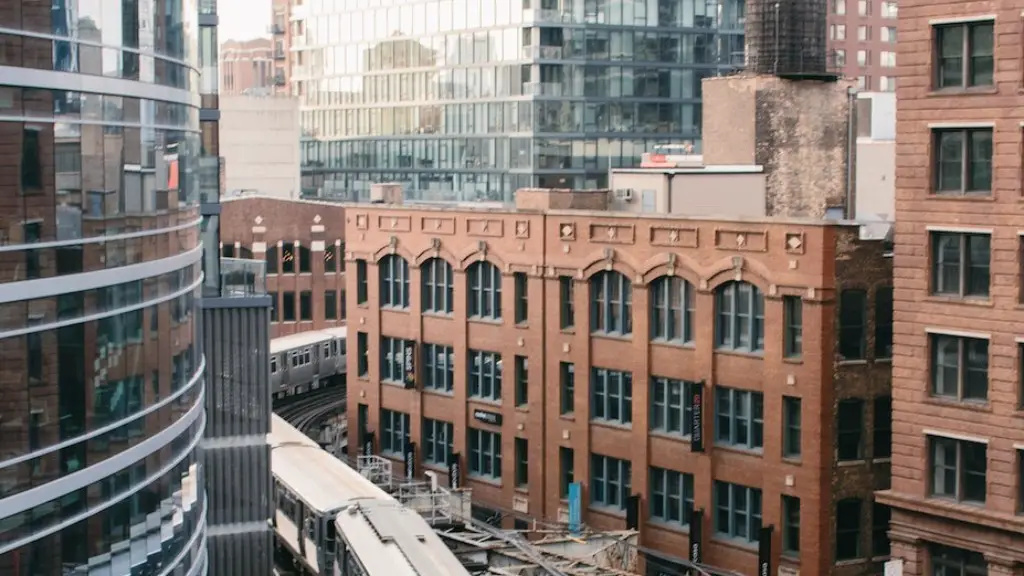What Is A Charrette In Architecture?
A charrette is a common term in architecture, referring to a collaborative project-focused planning session involving a multitude of stakeholders. Charrettes usually involve a series of workshops that assemble multiple stakeholders from diverse backgrounds in order to discuss the project’s objectives and generate a collaborative plan of action. It is usually used to develop creative design solutions that can be presented to stakeholders for potential approval and feedback. In this way, a charrette helps to ensure that all relevant perspectives are taken into consideration in the process.
Charrette activities consist of gathering data, developing strategies and ideas, and making decisions. Throughout the process, stakeholders review and exchange ideas, present information, and agree to definitions and objectives. The charrette process is intended to be an essential part of the design process – helping to inform decisions as they are made. It is also used to help stakeholders understand the implications of their decisions, make them better informed, and enable them to actively participate in the design process.
In its best form, a charrette is a rapid process that creates a shared vision for a project, typically through collaboration and communication. While it involves a lot of planning, the goal is to generate productive conversations that often result in innovative solutions. It can also be used as a tool to ensure proper implementation of design objectives and objectives set by various stakeholders.
The charrette process is an essential part of an architect’s job. It can help the architect to efficiently plan a project while taking into account the various perspectives of different stakeholders; the architect can then present their ideas and plans to the stakeholders swiftly, whom can weigh in on the project’s progress or provide constructive feedback. Architects need to be highly organized when presenting the process of charrette in order to ensure the success of the project and maintain a productive dialogue.
For several decades, the charrette process has also been used in other design fields, such as graphic design, urban planning, and landscape architecture. As a process, it helps to streamline the design process, allowing designers to work more efficiently and effectively. Additionally, it helps to build trust between the designer and stakeholders, ultimately strengthening the relationship.
The charrette process is highly beneficial for both the architect and the stakeholders. As a means of efficiently planning projects, the charrette process can help the architect to work more efficiently while having all the various perspectives of stakeholders taken into account. As a tool of communication and collaboration, the charrette can also be used to build trust between the designer and stakeholders and ensure proper implementation of design objectives. Ultimately, the charrette process is a valuable tool that can help ensure successful design projects.
Benefits Of A Charrette In Architecture
The charrette process is incredibly beneficial when used in conjunction with architecture. It helps the architect to efficiently plan projects while taking into account diverse perspectives of stakeholders. Architects need to be highly organized when presenting the process of charrette in order to ensure the success of the project and maintain a productive dialogue. Efficiency, innovation and trust are key elements of the charrette process and can help to ensure success.
The most obvious benefit of the charrette process is its ability to save time and money. This is accomplished by quickly gathering data, ideas and opinions from stakeholders, and formulating plans that consider collective interests. The charrette process makes it easy to incorporate design perspectives from all relevant parties while ensuring they are all taken into consideration, helping to avoid lengthy design delays or costly changes down the line.
Using a charrette process is also advantageous for creative exploration. It helps to generate more ideas, since multiple people are working together and collectively drawing from a variety of perspectives. Additionally, the charrette process encourages collaboration and discussions between the architect and stakeholders. This can help to create innovative solutions that can be implemented quickly.
Finally, the charrette process improves communication between the architect and stakeholders. Stakeholders can provide guidance and constructive feedback throughout the process, as well as weigh in on the project’s progress. As a result, the architect can address issues more quickly and can make decisions that are more responsive and aligned with the stakeholders’ interests and objectives.
Challenges Of A Charrette In Architecture
While the charrette process can be incredibly beneficial, it is not without its challenges. The most significant challenge is having diverse stakeholder perspectives represented in the process. Since stakeholders may have different interests, objectives, and values, it can be difficult to ensure that all perspectives are taken into consideration. The architect must be skilled in gauging the opinions of stakeholders to ensure that the most effective solutions are being pursued.
The charrette process can be time-consuming, as it requires the architect and stakeholders to come to an agreement on objectives and solutions. This process requires a lot of communication and collaboration between the architect and stakeholders, so that everyone understands their role and can articulate their objectives and ideas. The architect must be skilled at facilitating discussions and ensuring everyone’s voice is heard.
In addition, the charrette process can be challenging from a logistical standpoint. Keeping everyone on the same page throughout the process requires a great deal of organization and coordination. The architect must be a master of time management and must set realistic expectations for the process in order for it to run smoothly.
The charrette process can also be challenging logistically if the stakeholders are spread out geographically. This can make it difficult to coordinate in-person meetings or workshops. As a result, the architect must be adept at managing virtual meetings and coordinating the discussions of stakeholders located in various locations.
Critical Considerations For Successful Charrette Process
In order to ensure a successful charrette process, there are several critical considerations that the architect must keep in mind. The most important is to ensure that there is a shared vision for the project. This requires the architect to understand the needs, interests and objectives of the stakeholders and provide guidance for how to prioritize them. It is also important to be clear about the project’s objectives, so that everyone involved is on the same page.
Another critical consideration is to ensure open communication throughout the process. It is important that architects create forums for discussion where stakeholders can openly share their perspectives and ideas. It is also important to create a dialogue between the architect and stakeholders so that everyone is heard and involved in the project’s progression.
The architect must also be flexible and willing to adjust their strategies as needed. As attendees provide input and other perspectives, the architect must be prepared to adjust plans accordingly. They must also be open to input from the stakeholders and be willing to compromise when necessary.
Finally, the architect must be highly organized and have a plan for how the charrette process will unfold. Clear timelines and objectives must be set and the architect must track progress and ensure that all parties are on the same page throughout the process. Organization is key to the success of any charrette process.
Best Practices For A Charrette In Architecture
The best practices for architecting a charrette process involve setting a clear goal from the start. The goal should focus on the outcomes desired by the different stakeholders. It should be concise and clear, so that everyone understands the objectives and can focus their efforts on achieving them.
The architect must also be willing to listen and hear out different perspectives. This helps to ensure that all stakeholders’ interests are taken into consideration throughout the project. Additionally, the architect must be willing to negotiate with stakeholders and work to build consensus and agreement.
The architect must also be organized and skilled at managing timelines and expectations. This involves setting deadlines and checkpoints throughout the process and ensuring that all stakeholders understand the timelines and objectives. The architect must also be able to manage virtual meetings and ensure that all stakeholders are informed of progress and feedback.
Finally, the architect should not be afraid to be creative in their approach when solving problems. Being creative helps to ensure that innovative and effective solutions are reached. Additionally, it helps to foster collaboration and open dialogue between the architect and stakeholders.
Conclusion
A charrette is a valuable tool for architects to quickly and efficiently plan and develop projects. The charrette process helps to ensure that all relevant perspectives are taken into consideration and encourages collaboration and communication between the architect and stakeholders. It also helps to ensure proper implementation of design objectives and objectives set by various stakeholders. Ultimately, the charrette process is an essential part of an architect’s job and can be incredibly beneficial when used correctly.





